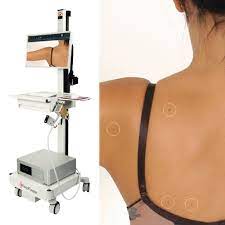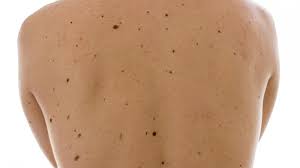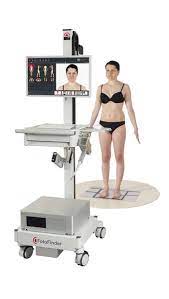Mole Mapping in Nairobi.

The skin is the largest organ in the body. It plays important roles such as the protection of underlying parts, and prevention against diseases by preventing entry of pathogens into the body. However, being the front line of defence, the skin is usually exposed to several harmful conditions, that cause skin disease. Melanoma and Skin cancer are some of these conditions. Studies show that there is an increase in the number of skin cancer cases all over the world. Cancer is a menace, that affects the general health of its patients, and reduces their life span. However, early detection and treatment of this condition can save lives, time and money. With the introduction of techniques such as Mole mapping, we at Avané clinic, help you take lead in preventing and fighting against skin cancer.
Mole mapping is a digital imaging that is used by dermatologists to find new lesions and monitor the existing moles on your skin that could turn into melanoma or skin cancer. Moles are pigmented lesions that appear on the skin. These are the growths or spots on the skin, caused by melanocyte cells. Melanocyte cells are responsible for the formation of melanin in the body. The concentration of melanin determines skin colour or pigmentation. There may be higher melanin concentration at particular spots, causing pigmented lesions. Some of these lesions may be cancerous or may turn cancerous in future. These lesions are called moles.

Mole mapping is used to detect such lesions. This helps dermatologists and patients to find a treatment or a way to manage them. It utilizes digital photography to identify the moles and provides means to check on their progressions. Mole mapping helps track the number of moles and helps identify any new moles that may appear on your skin. Moreover, it helps to identify any changes to your moles, as time goes by. These changes include variations in the shape, size and colour of the moles. Such changes are important indications that the moles may potentially become cancerous. Prevention of the progression of the moles to melanoma and skin cancer is of paramount importance. At Avané clinic, we employ this screening technique, and incorporate other prevention and treatment means for our patients. Our lead doctor, Dr Pancholi, is a specialist with extensive experience in the medical and surgical treatment of skin cancers.
How is Mole mapping done?
Mole mapping is done at our clinic. You will have to see the dermatologist for a consultation. Here, the doctor will enquire about your medical history, family history, and previous treatment for your lesions, among other queries. He will also ask about your moles and other lesions. Furthermore, you will be asked to undress, to the level of your comfort. The doctor will perform a physical examination on your skin, using a hand-held device called a dermatoscope. He marks out any moles that he might consider necessary for them to have extra magnification. Additionally, he also discusses the procedures with you in-depth, and answers your questions should you have any.
The digital photography is done in a separate room. and you will be led into a room with a camera. We recommend a full body skin check since we want to leave no chances and no mole unchecked. Oftentimes, we have seen that the moles that the patient ignores, might be the most harmful ones. The digital camera scans your body from head to toe, taking pictures of your skin. You can have your underwear on you if you feel uneasy. But if you have moles in areas covered by the underwear, be sure to inform the doctor about them. He will discuss the way forward with you. The photos are taken and stored in a secure server, where they cannot be accessed by unauthorised personnel. This is to protect the significance of the photos, your privacy and your dignity altogether.
The photographs taken at your first visit will be used as a base and reference for all your subsequent visits and mole mappings. This is meant to help identify and track any changes in the moles, to aid in detecting and preventing them from developing into skin cancer. It is important to have frequent checks. We recommend repeat sessions, 6 months to a year apart. The doctor will be able to detect any slight variations and will perform more tests. If anything suspicious is detected, he will help you find a treatment method early enough.

While some lesions may be obvious to diagnose as cancerous or potentially cancerous, other lesions may require specialised checking and analysis. We perform biopsies of such lesions to examine them further. After the session, we shall put together your mapping results and a report. These will be sent to you after about 1-3 weeks after the appointment. We ensure that you know your moles well. This is primal when it comes to self-examination. You can be able to identify new moles and check on any changes in the existing moles. Should you note any alterations or new suspicious moles, it is important that you contact your doctor for checks. This is another important step in the early detection of melanoma and other skin cancers.
The duration of your appointment depends on the number of moles that need close-up photography. If you only need overview photographs, the session should last about 15 minutes. If you have many moles that your doctor has marked for magnification photography, the appointment will last longer, for about 1 hour.
Who is most suitable for mole mapping?
Mole mapping is most suitable for people:
- Who have many moles (more than 20 to 100)
- With atypical or funny-looking naevi/moles (moles that are large or of unusual colour or shapes)
- Who have moles on the back, which may be difficult to keep an eye on
- Who have a previous history of melanoma or atypical moles
- With a strong family history of melanoma
- Who have moles and fair skin that has been sunburned in the past
- Who have concerns about individual moles or freckles, e.g., because of their appearance or recent change
How to prepare for mole mapping.
- Wear comfortable clothing and shoes that are easy to take off.
- Preferably wear black underwear and remember you will need to wear similar undergarments for subsequent mole mapping sessions. Boxer shorts are not recommended.
- Wear as little jewellery as possible. (Remove watches, bracelets, necklaces, chains, earrings, piercings, etc.)
- Please do not wear makeup, lipstick, eyeliner or nail polish.
- Do not use self-tanning products in the week prior.
- If you have long hair, please wear your hair up during the photography.
- For men with a large amount of body hair in areas such as the chest, abdomen, back, arms or legs, we ask this area be trimmed or shaven so that the moles can be visualized.
Mole mapping for children.
Most parents are concerned about the best age to allow their children to have mole mapping. We recommend that a child be put for mole mapping if the child:
- Has had sunburns in the past
- Has many freckles
- You have identified moles in your child (even very young), that has progressively grown
- 1 or more large moles (>2mm)
- Has a pigmented birthmark in an exposed area
- Gets a mole that is raised, has asymmetrical borders, or different colours should always be examined
- Has any mole that causes symptoms of itch, pain, or crusting
- Is from a family that has a strong family history of melanomas or skin cancers.
Advantages of mole mapping.
Mole mapping helps in the identification and early detection of potential melanoma and other skin cancers. This is important since early treatment of cancer can help save time and money as well as prolong life. Studies show that when cancer is diagnosed and treated early, it can prolong life by up to 5 years for 95% of its patients. Moreover, mole mapping uses digital photography, which enables the storage of images. This enables the use of previous records to determine if the concerned lesion has changed. Should a lesion be identified as potentially harmful, our dermatologists define the criteria to have it removed. This reduces the risk of melanoma, reduces surgery and lowers the biopsies taken. Additionally, the imaging also allows the identification of other forms of lesions such as keratosis, basal cell or squamous cell carcinomas.
Take Away.
When it comes to cancer, the saying that prevention is better than cure is best applicable here. In addition to the prevention, early detection of cancer is also a crucial point in its treatment. This is not only for melanoma and skin cancer but also for other types of cancer. This is why mole mapping is important. It is a digitized screening technique, that allows you to identify your moles, and know about them. Furthermore, this will help you self-examine yourself, and know if new moles appear or if existing ones change. For the best mole mapping in Nairobi and its environs, look no further than Avané clinic. We offer the best mole mapping services by the best doctor in the field. Visit us at the Yaya centre, in Nairobi or contact us to make enquiries or book your appointment for mole mapping.






Leave a Reply